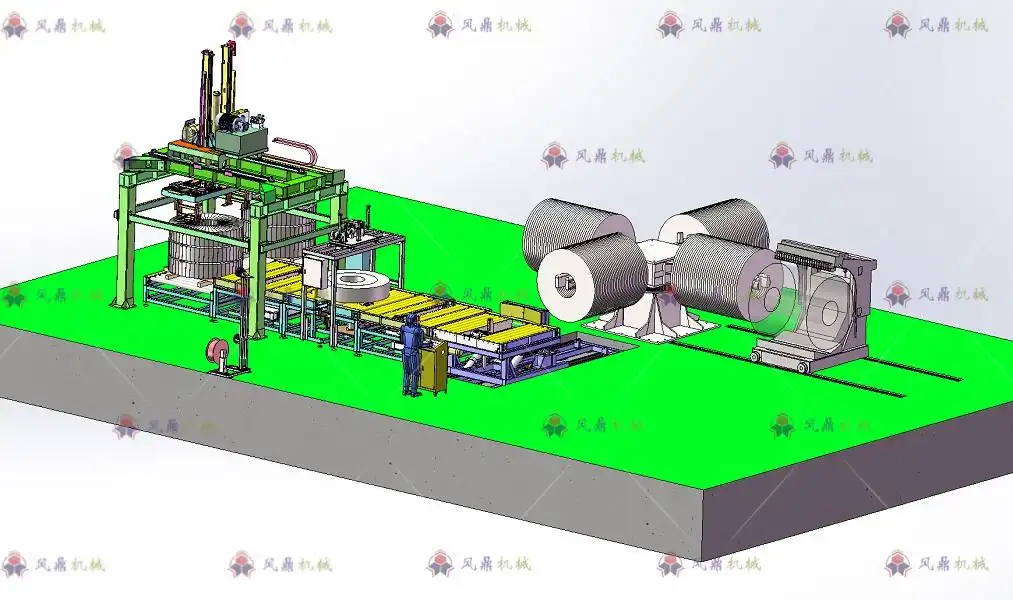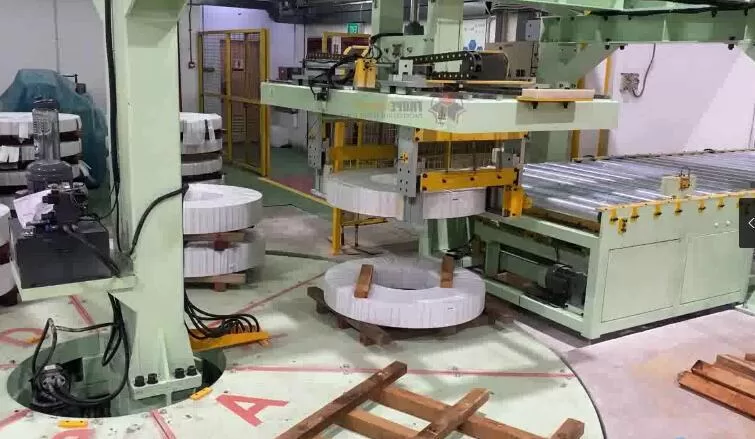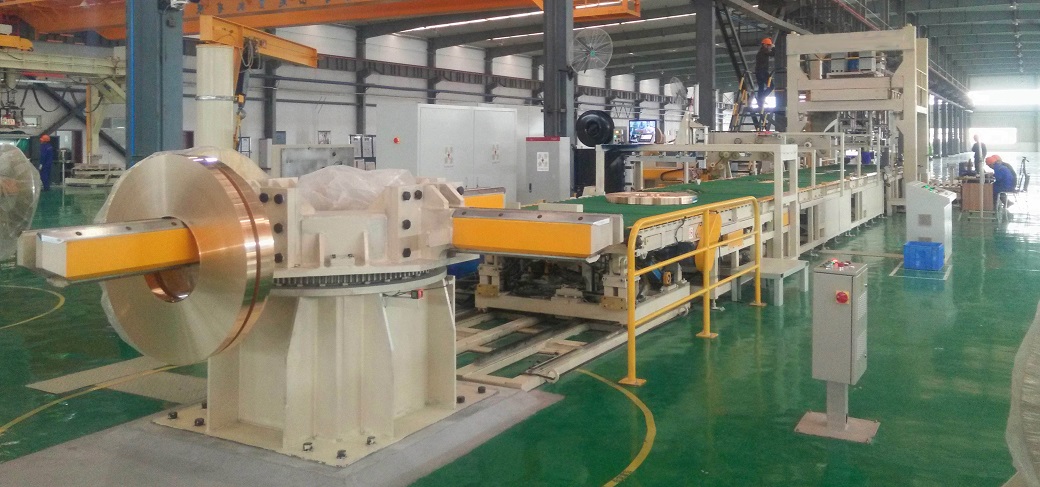Are you watching your production line run at full speed, only to see everything grind to a halt at the packing station? In Vietnam's fast-growing manufacturing landscape, many factories face this exact problem. Manual or semi-automatic packing creates a bottleneck that wastes time, increases labor costs, and risks product damage. This inefficiency slowly eats away at your profits and holds your business back from its true potential. The solution is clear: investing in a fully automated coil packing line. This is not just an expense; it's a strategic move to unlock higher throughput, consistent quality, and a powerful return on investment.
The return on investment (ROI) for coil packing automation in Vietnam’s manufacturing sector is typically realized within 18 to 36 months. This rapid payback comes from significant reductions in labor costs, a dramatic increase in packing speed and throughput, minimized consumption of packing materials, and improved product protection which reduces customer claims. Automation transforms the packing station from a cost center into a strategic asset that directly drives profitability and operational efficiency.

I've seen this transformation happen many times. As an engineer who started on the factory floor and later built my own packing machine company, SHJLPACK, I understand the numbers behind these investments. The ROI isn't just a simple calculation. It's a collection of benefits that touch every part of your operation. Let’s break down exactly how this investment pays for itself and why it’s a critical step for any serious manufacturer in Vietnam and beyond.
How Does Automation Directly Reduce Operational Costs?
Are labor, material, and energy bills eating into your profit margins every month? You watch these costs go up, making it difficult to predict your profitability and plan for future growth. Every meter of wasted stretch film and every minute of unnecessary labor is money walking out your door. A fully automated packing system solves this. It gives you control over these variable expenses, turning unpredictable costs into a fixed, manageable investment that systematically cuts down on waste.
Automation directly reduces operational costs by minimizing the need for a large manual workforce, optimizing the use of every inch of packing material, and running on energy-efficient modern systems. This combination leads to immediate and measurable savings on your balance sheet.

Deeper Dive: The Three Pillars of Cost Reduction
When I talk to steel mill owners like Javier Morales, who manage massive operations and scrutinize every investment, the conversation always comes back to tangible cost savings. He knows that small inefficiencies add up to huge losses in a 2-million-ton-per-year facility. Let's break down the three main ways automation slashes costs.
1. Labor Cost Savings
A manual packing station is incredibly labor-intensive. You might need a team of 3-4 workers per shift just to keep up. If you run two or three shifts, that's 6 to 12 people dedicated only to wrapping coils. This comes with salaries, benefits, training costs, and the constant challenge of employee turnover. An automated line, however, can be managed by a single supervisor per shift. This person oversees the system rather than performing the hard physical labor.
Let's look at a simple comparison:
| Metric | Manual Packing Team (2 Shifts) | Automated Packing Line (2 Shifts) |
|---|---|---|
| Workers | 6-8 | 2 |
| Consistency | Varies by worker and fatigue | 100% consistent |
| Training Time | Weeks, plus ongoing | Days, for system operation |
| Safety Risk | High (lifting, repetitive motion) | Minimal (workers are separated from machinery) |
The savings here are direct and substantial. You are not just cutting salaries; you are reducing overhead and minimizing the risks associated with manual labor.
2. Material Consumption Optimization
In manual wrapping, consistency is impossible. One worker might use too much stretch film, wasting material. Another might use too little, compromising the package's integrity and risking corrosion from moisture. Our automated systems at SHJLPACK are engineered for precision. The machine calculates the exact amount of film needed based on the coil's dimensions. It applies it with consistent tension and overlap, every single time. This typically reduces material consumption by 20-30% compared to manual methods. Over a year, this saving alone can be tens of thousands of dollars. It also helps with environmental goals by reducing plastic waste, a growing concern for leaders like Javier.
3. Energy Efficiency
Javier's challenge with volatile energy costs is common across the industry. Older equipment is often a major energy drain, running constantly even when idle. Modern automated lines are designed with efficiency in mind. They use high-efficiency motors and variable frequency drives (VFDs). VFDs allow the machine to use only the power it needs, ramping up for wrapping and powering down when idle. This is a huge advantage over old hydraulic systems that run at full power all the time. This focus on energy efficiency helps achieve goals like a 10% reduction in unit product energy consumption.
Can Automated Packing Lines Really Boost Throughput and Meet Fluctuating Demand?
Is your packing area the bottleneck of your entire operation? Your production lines are churning out coils, but they pile up, waiting to be wrapped. This chaos slows everything down. When a large, urgent order comes in, you struggle to get it out the door on time, risking your relationship with the client. This inability to scale on demand makes you feel reactive, not proactive. An automated packing line synchronizes perfectly with your production speed. It eliminates the bottleneck and gives you the agility to handle any order volume, ensuring you are always in control.
Yes, automated packing lines dramatically boost throughput. They operate 24/7 with consistent speed and precision, eliminating the delays and variability of manual labor. By integrating with your production management systems (MES), they can instantly adapt to different coil sizes and packing requirements. This gives you the flexibility to meet fluctuating market demand without missing a beat.

Deeper Dive: From Bottleneck to Powerhouse
For a CEO like Javier, whose goal is to increase equipment uptime to 95%, a packing bottleneck is unacceptable. It makes that goal impossible. The entire plant's efficiency is limited by its slowest process. I remember a client in the steel wire industry. Their drawing machines were incredibly fast, but the finished coils sat on the floor for hours, waiting for the packing team to catch up. It created a safety hazard and a logistical nightmare. The solution was to design a packing line that could handle the peak output of their machines.
1. Synchronized Speed and Continuous Flow
An automated packing line is not a standalone island. We design it as an integrated part of your production flow. Using conveyors and automated coil cars, the system takes the coil directly from the slitter or recoiler, weighs it, straps it, wraps it, and sends it to the warehouse. There is no waiting. The packing speed is matched to your production speed. A cycle that took a manual team 10-15 minutes can be completed in 2-3 minutes by a machine. This continuous flow is how you achieve world-class operational efficiency. It's the key to turning your target of 95% effective run time into a reality.
2. Agility for Market Fluctuations
The steel industry is cyclical. Demand from the automotive or construction sectors can change quickly. An automated system provides the agility to respond.
- Easy Parameter Changes: When you need to switch from packing a large steel coil to a smaller slit coil, you don't need to retrain a crew. The operator simply selects the new recipe on the HMI (Human-Machine Interface). The machine automatically adjusts the wrapper position, strapping tension, and wrapping program.
- Scalable Output: If a massive order comes in, the automated line can run 24/7 without a drop in quality or speed. You don't have to worry about worker fatigue, overtime costs, or hiring temporary staff. You can confidently promise shorter lead times to your customers because your packing capacity is reliable and predictable. This capability is essential for managing the volatile market demands Javier faces.
3. Integration with Digital Systems
This is where automation becomes truly powerful for a forward-thinking leader. Our machines are designed to communicate with your Manufacturing Execution System (MES). This allows for a level of control and visibility that is impossible with manual processes. For example, the MES can send an order to the packing line with the coil ID and all required packing specifications. The machine executes the order, then sends data back to the MES, confirming the coil has been packed, its final weight, and the materials used. This seamless data flow is the foundation of a smart factory and a core component of achieving a full digital transformation.
What is the Long-Term Value Beyond Immediate Cost Savings?
You've made an investment. The machine is installed, and you see the immediate cost savings. But what happens in five years? Will the machine become a maintenance burden? Will it be obsolete as technology and regulations change? Many business owners worry that they are just buying a piece of equipment, not a lasting solution. This short-term thinking can be a trap, leaving you with an asset that depreciates in value instead of one that grows with your business. The real goal is to invest in a strategic asset, backed by a partner who will help you adapt and succeed for years to come.
The long-term value of coil packing automation goes far beyond the initial ROI. It creates a safer work environment, guarantees consistent product quality that protects your brand, provides critical data for your digital transformation strategy, and ensures you can meet future environmental and international standards.

Deeper Dive: Building a Future-Proof Asset
When I founded SHJLPACK, my mission was to be more than a supplier. Having worked my way up in the industry, I know that factory owners like Javier are not just buying steel and iron; they are building a legacy. The equipment they choose must support that long-term vision. Here’s how a proper automation investment delivers value for years.
1. Enhanced Worker Safety
The factory floor can be a dangerous place, especially around heavy steel coils. Manual handling, strapping, and wrapping expose workers to risks of strains, cuts, and crushing injuries. Automation removes people from these dangerous tasks. The machine does the heavy lifting, turning, and strapping. This drastically reduces workplace accidents, which in turn lowers insurance premiums and eliminates the potential for costly litigation. Creating a safer workplace also improves employee morale and makes your company a more attractive place to work. This is a priceless long-term benefit.
2. Guaranteed Product Quality and Brand Reputation
I once worked with a client who was getting constant complaints about rusted coils from their international customers. They had a good manual packing team, but small inconsistencies in the wrap allowed moisture to get in during long sea voyages. The cost of these claims was hurting their reputation. We installed a fully automated wrapping line that applied VCI paper and stretch film with perfect, hermetic seals. The rust claims dropped to zero within three months. This is the power of consistency. An automated system delivers the same perfect package every time, protecting your product and, more importantly, your brand's reputation for quality.
3. Data for Smart Decision-Making
This is a critical point for leaders focused on digital transformation. A modern packing line is a rich source of data. It's equipped with IoT sensors that track everything:
- How many coils were packed per shift?
- What was the average packing time per coil?
- How much stretch film and strapping was used?
- Were there any machine errors or stoppages?
This data flows directly into your management systems. It allows you to move from reactive maintenance to predictive maintenance. Instead of fixing the machine after it breaks, the system can alert you that a motor is drawing too much power or a sensor is failing, allowing you to schedule maintenance before a costly breakdown occurs. This data-driven approach is essential for achieving the high efficiency and low operating costs Javier is aiming for.
How Do You Choose the Right Automation Partner, Not Just a Supplier?
You know you need a new packing line. You send out requests for quotes, and several companies respond with glossy brochures and attractive prices. They all seem to promise a perfect solution. But how do you know who truly understands the realities of your factory floor? How can you be sure their machine will integrate with your existing equipment and that they will be there to support you after the sale? Choosing the wrong company can lead to a failed investment, with a machine that causes more problems than it solves. The key is to shift your mindset from buying a product to choosing a partner. You need a partner with deep engineering knowledge who is committed to providing a total solution.
Choosing the right automation partner means looking beyond the price tag. You must evaluate their engineering expertise in your specific industry, their ability to customize a solution for your unique needs, the comprehensiveness of their after-sales support, and their commitment to helping you achieve your long-term strategic goals.

Deeper Dive: The Partner vs. Supplier Checklist
This is perhaps the most important decision you will make in the entire process. A great machine from a poor partner is a bad investment. As an engineer myself, I built SHJLPACK on the principle of partnership. I am grateful for what this industry has given me, and my goal now is to share my knowledge to help others succeed. Here is what I believe separates a true partner from a simple supplier.
1. They Have Engineering in Their DNA
When you talk to a potential partner, are you speaking with a salesperson or an engineer? A salesperson will talk about features and prices. An engineer will ask about your coil's inner and outer diameters, its width, your production cycle time, and the layout of your factory floor. They will want to understand your entire process, from slitting to warehousing. A partner with strong engineering roots, like our team at SHJLPACK, doesn't sell you a standard machine. We design a solution that fits your specific operational reality.
2. They Offer a "Total Solution"
Our slogan at SHJLPACK is "TOTAL SOLUTION FOR WRAPPING MACHINE." This is not just marketing. It’s our philosophy. A supplier might sell you a wrapping machine. A partner will look at the entire packing station. This includes:
- Infeed and Outfeed: How will coils get to the machine and leave it? This involves designing the right conveyors, turnstiles, or coil cars.
- Handling: Do you need an upender to turn the coil from eye-to-sky to eye-to-wall?
- Ancillary Processes: Does the solution need to include strapping, weighing, and labeling, all integrated into one seamless system?
A partner takes responsibility for making the entire system work together, so you don't have to coordinate between multiple vendors.
3. Their After-Sales Support is Clear and Comprehensive
The relationship doesn't end when the machine is installed. That's when it begins. Before you sign anything, ask these questions:
- What does your installation and training process look like?
- Do you offer remote diagnostic support to troubleshoot issues quickly?
- How quickly can you supply critical spare parts?
- Do you provide preventative maintenance plans?
A partner’s answers to these questions will be specific and reassuring. They understand that machine uptime is critical to your profitability.
4. They Share Your Vision for the Future
A partner is interested in your long-term goals. They should be able to discuss how the equipment they provide today will support your digital transformation and environmental compliance goals tomorrow. They should be a source of knowledge and advice, helping you navigate industry trends. This is the essence of a strategic partnership, the kind that helps leaders like Javier not only solve today’s challenges but also build a stronger, more competitive business for the future.
Conclusion
Investing in coil packing automation in Vietnam delivers a fast ROI. It is the strategic foundation for achieving long-term efficiency, superior quality, and sustainable growth in a competitive global market.





